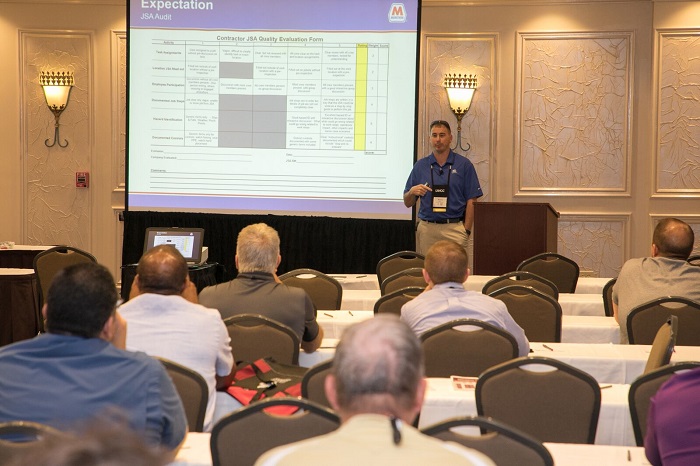Safety in the workplace is only efficient if an effective plan supports it. Knowing a plant’s safety codes and violations isn’t always the best guarantee in making sure accidents and injuries are kept down. Michael Babin, contractor safety representative for Marathon Petroleum Co.’s Garyville, Louisiana, refinery, believes simple engagement methods can be used to produce safety results while not putting a dent in company expenses in order to do so.Michael Babin, contractor safety representative for Marathon Petroleum Co.
When Marathon hired Babin in 2016, he witnessed one of the biggest turnarounds in the Garyville refinery. Several major projects took place, including the construction of five new units and revamping pipes connecting on-site. Such construction would bring an influx of new and temporary contractors, which was something Babin admitted the plant was not prepared to handle. Beforehand, management noticed worker incidents were at a minimum. Once new contractors came to work on the projects, incident data began to show a different picture, with accidents rising.
The data given showed the number of incidents requiring first aid was 376, while the number of recordable incidents reached 22. At first, it was believed the rise was due to outside contractors who were not accustomed to the site’s safety procedures, so once these major projects were completed and workers left the site, the number of incidents would drop and everything would be fine. In 2017, however, the projects were completed, and yet incidents still had not dropped. The system in place had worked before, so what was the problem now?
“Marathon doesn’t want anyone to get hurt,” said Babin, speaking at the Louisiana Governor’s Safety & Health Conference and Expo held recently in Baton Rouge. “But we found that our contractors were not engaged. At safety meetings they would go to, contractors were found to be unresponsive and afterward would go out and do their own thing.”
It was from this realization Marathon was able to come up with a goal: to develop a contractor safety program that reduces incidents on-site. This is a common goal, but Marathon wanted to take it a step further and allow contractors to lead the program.
Contractors were able to come up with a system known as “The Hive,” which would keep workers accountable for safety and allow the enforcement of safety rules among outside contractors as needed. Leadership would be required in order for this new idea to survive, so an organization consisting of six members was formed who would make the majority of decisions needed for The Hive based on feedback from fellow workers.
Expectations for contractors are aimed to help them remain active and aware of their safety. Goals, meeting attendance and engagement from contractors with their workers can all help get contractors engaged in their workers’ safety. This also allows for continuous improvement among contractors, who can receive evaluations and contractor scorecards that provide them with accountability.
Smartphone apps have also helped Marathon achieve its goals. Communication apps are used, allowing workers to have instant access to meeting minutes and past audits, as well as group text/chat messaging for easy results. Most of these apps are simple to set up and free to download.
Once these changes were implemented and a new identity was inserted into Marathon’s safety expectations, incident rates greatly declined for Marathon.
“When coming up with a plan, it is important to get engagement from your workers at a low cost,” Babin said. “Higher costs spent on safety generally give the impression that something is going wrong at your site. Having your workers be a part of the process and feel as if they are a part of something will help give them a sense of community and protection. Marathon has shown that safety doesn’t have to be overly complicated and in fact just needs a little engagement.”

